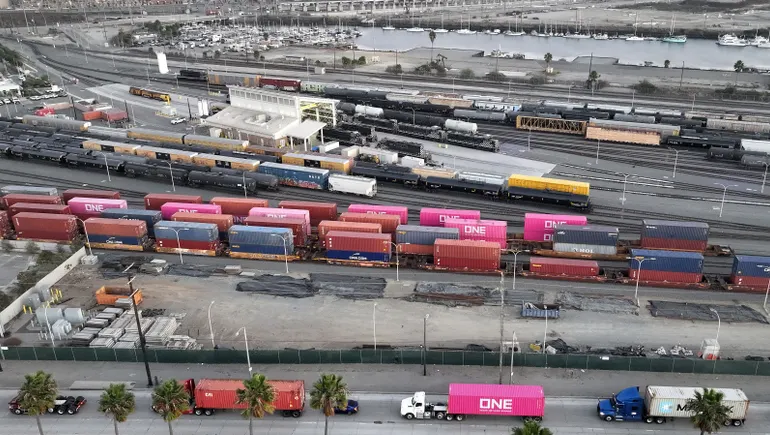🎣 Am I Making Enough?
Here is another round-up of the most engaging and talked-about freight content from around the web and from us.
Port of Los Angeles cargo volumes fell 5% in May due to rising tariffs.

The Port of Los Angeles saw its first drop in container volume in nearly a year, as new tariffs stall trade flows and ripple across the supply chain.
For the first time in ten months, container volumes at the Port of Los Angeles declined year-over-year, ending a stretch of steady growth.
The port processed 716,619 TEUs in May, down 5% compared to the same month in 2024 and marking the lowest monthly output in over two years.
According to Executive Director Gene Seroka, the slowdown is directly linked to newly implemented tariffs under the Trump administration, including a 10% universal baseline tariff that went into effect in April.
“Unless long-term, comprehensive trade agreements are reached soon, we’ll likely see higher prices and less selection during the year-end holiday season,” Seroka said.
Year-to-date volumes remain up 4% from the same period in 2024, but the outlook is increasingly uncertain as trade disputes weigh on shipping activity.
The effects have extended inland, particularly to local trucking operations that rely heavily on port container flows.
“If you’re a trucker who was hauling four or five containers a day prior to these announcements back in April, today, you’re likely hauling two or three loads,” Seroka noted.
The California Trucking Association echoed the concern, pointing out that the San Pedro Bay Port Complex accounts for 40% of U.S. imports. “Less goods coming to the ports means less truck drivers on the road,” the association said in a statement to Trucking Dive.

Seventeen sailings were cancelled in May alone, amounting to an estimated loss of 225,000 container units. Despite previous forecasts of a summer import surge—especially before tariff pauses on Chinese goods expire in July and August—Seroka said he hasn't seen those volumes materialize.
“Retailers are not telling me that they’re boosting inventory levels,” Seroka said. “So I’m not seeing that either.”
Ernie Tedeschi, Director of Economic Studies at Yale Budget Lab, estimated that the tariffs would raise average prices by 1.5%, costing households nearly $2,500 annually in lost purchasing power. Lower-income families are expected to be hit the hardest, with products like shoes, apparel, and electronics facing double-digit price hikes.
Source: FreightWaves | SupplyChainDive
Join over 14K+ subscribers to get the latest freight news and entertainment directly in your inbox for free. Subscribe & be sure to check your inbox to confirm (and your spam folder just in case).